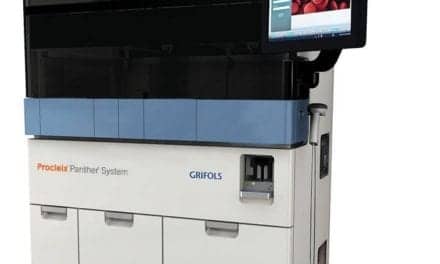NanoString Technologies Inc, Seattle, a provider of life science tools for translational research and molecular diagnostic products, recently announced online publication of a study that reinforces the ability of the company’s Prosigna breast cancer assay to inform physician treatment decisions by predicting which patients are most likely to benefit from chemotherapy.1
The study was conducted in collaboration with Spanish researchers from Vall d’Hebron Institute of Oncology, the University of Barcelona, and the Virgen de la Victoria Regional University Hospital.
“These results highlight the value of considering tumor biology in the diagnostic evaluation of early-stage breast cancer,” says Aleix Prat, MD, PhD, principal investigator and head of the medical oncology department at the University of Barcelona Hospital Clinic. “The results also support the findings of prior studies, which have shown that ROR score and intrinsic subtype are strong predictors of response to chemotherapy.”
The study authors evaluated the correlation between the numerical risk score provided by the Prosigna assay, referred to as the ROR or Prosigna score, and response to a modern neoadjuvant chemotherapy (NAC) regimen consisting of anthracyclines and taxanes. The study demonstrated that ROR score and intrinsic subtype as determined by the Prosigna assay are strong predictors of response to NAC, confirming expectations that high-risk tumors are significantly more responsive to systemic chemotherapy than low-risk tumors.
The authors reported that ROR score significantly predicted pathologic complete response to NAC in hormone receptor-positive patients with node-negative or node-positive (1–3 positive nodes) disease (p = 0.027). Further analysis revealed that for every 20 point increase in the ROR score, a patient was 59.1% more likely to respond to NAC.
The authors concluded that intrinsic subtypes, as determined by the Prosigna assay, are predictive of chemotherapy sensitivity, as referenced in the recently updated St. Gallen International Breast Cancer Guidelines.2
“This new evidence confirms Prosigna’s ability to predict response to chemotherapy,” says Brad Gray, NanoString president and CEO. “These results are complementary to the large body of data showing that Prosigna identifies women who are at such low risk that they may be spared overtreatment with chemotherapy.”
Although the reported study results were based on the analysis of core needle biopsies, Prosigna is currently indicated for use with excisional biopsies only. Additionally, in the United States, the Prosigna patient report does not include information related to intrinsic subtype. For further information, visit NanoString.
REFERENCES
- Prat A, Galván P, Jimenez B, et al. Prediction of response to neoadjuvant chemotherapy using core needle biopsy samples with the Prosigna assay. Clin Cancer Res. Published online first, July 7, 2015; doi: 10.1158/1078-0432.ccr-15-0630. Available at: http://clincancerres.aacrjournals.org/content/early/2015/07/07/1078-0432.CCR-15-0630.full.pdf+html. Accessed July 7, 2015.
- Coates AS, Winer EP, Goldhirsch A, et al. Tailoring therapies—improving the management of early breast cancer: St Gallen international expert consensus on the primary therapy of early breast cancer, 2015. Ann Oncol. Published online first, May 4, 2015; doi: 10.1093/annonc/mdv221. Available at: www.annonc.oxfordjournals.org/content/early/2015/05/04/annonc.mdv221.abstract. Accessed July 7, 2015.





